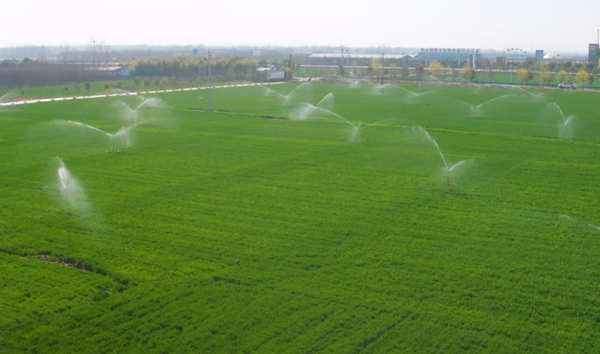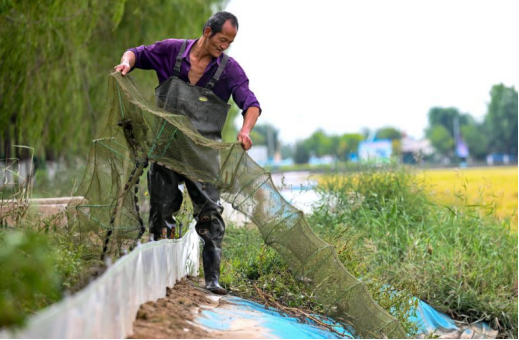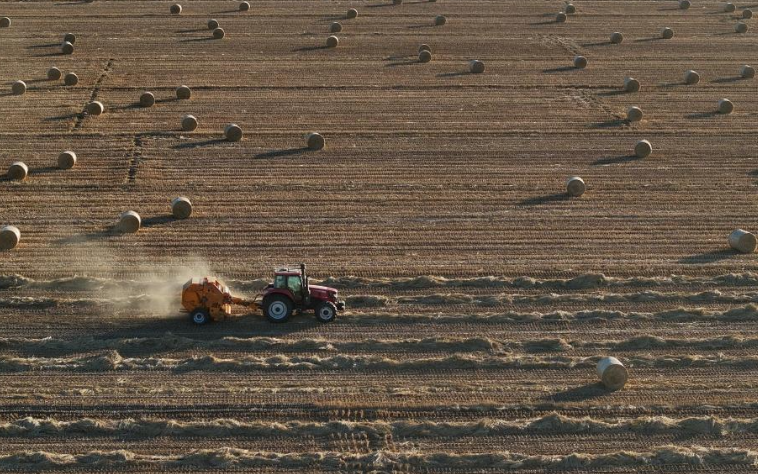In December 2024, the Ministry of Agriculture and Rural Affairs of China issued the “Guiding Opinions on Accelerating the Comprehensive Green Transformation of Agricultural Development and Promoting Rural Ecological Vitalization” (hereinafter referred to as the “Guiding Opinions”), making arrangements to promote the comprehensive green transformation of agricultural development and requiring the promotion of green circulation to ensure a smooth circulation in agricultural industry development. Vigorously advancing the integration of crop and livestock production, balancing grain and forage, developing rice-fish integrated farming, and organically linking production and daily life for circulation—thereby constructing a green circular agricultural industry system—has become an important task for China both now and in the coming period.
I. Promoting the Integration of Crop and Livestock, Reconstructing the Crop-livestock Circulation System
The utilization of manure stands as a pivotal link in achieving the circular development of integrated crop and livestock farming. In recent years, China has made substantial efforts in promoting the return of manure to farmland, with the manure-return area reaching 370 million mu-times in 2023, accelerating the formation of a new type of crop-livestock relationship. However, overall, the separation of crop and livestock operations in China has not undergone a fundamental transformation. Only 12% of farming households practice integrated crop-livestock operations, and there are still a limited number of socialized service entities connecting crop and livestock producers. To propel the development of integrated crop-livestock farming, it is essential to organically combine traditional cultivation and breeding models with modern technologies and advanced management approaches to reconstruct the crop-livestock circulation system, focusing on “nutrient management, on-site conversion, and green services.”
1. Implement nutrient management. Guide various regions in scientifically calculating the nutrient demand of the planting industry and the nutrient supply from livestock manure, reasonably determining the scale of livestock breeding, and optimizing the layout of animal husbandry development.
2. Promote on-site conversion of manure and wastewater. By building a batch of eco-farms featuring integrated crop-livestock systems, we can achieve on-site utilization of livestock and poultry manure, remove blockages between the livestock and planting industries, and foster crop-livestock circulation.
3. Expand and improve agricultural socialized services. Vigorously foster socialized service entities that are specialized in the use of manure, support capable service entities in establishing comprehensive agricultural service centers, encourage the exploration of a tiered pricing and payment mechanism for manure, making full use of big data and information technologies to strengthen whole-process management of manure utilization and enhance the effectiveness of green services.

Under the integrated crop-livestock production model, mixing liquid fertilizer with clean water and transporting it to farmland through an irrigation system can help save both water and fertilizer.
II. Balancing Grain and Forage, Optimizing the Crop-animal Circulation System
In recent years, under policy support such as “grain-for-forage” reforms and alfalfa development actions aimed at vitalizing the dairy industry, China’s forage industry has made some progress. In 2023, the country’s cultivated forage area reached 116 million mu, with a total forage output of 101 millionmetric tons. However, as China’s forage industry overall started relatively late, there is still a considerable gap in the supply of high-quality forage. On the basis of consolidating and enhancing grain production capacity and stabilizing the production of cotton, oil, sugar, and “vegetable basket” products, efforts should be made to promote “grain-for-forage” reforms in accordance with local conditions to optimize the farm-animal circulation system.
1. Strengthen the breeding of high-quality forage varieties. Proactively engage in the development of premium forage varieties; accelerate the selection and promotion of a batch of high-yield, high-protein, stress-resistant, salt-tolerant, and high-value forage varieties.
2. Increase both the quantity and quality of forage. Steadily expand the cultivation of high-quality forage such as silage corn and alfalfa, and advance the construction of forage production bases.
3. Promote the full-chain enhancement of forage. Accelerate the research, development, and application of machinery and equipment for forage production and processing, as well as small-scale machinery for grass cultivation in forested areas. Cultivate a group of new-type operating entities—such as grass-livestock cooperatives and forage enterprises—that have high operational standards and strong capacity to drive development. Actively develop easily circulated forage products, including high-density grass bales, grass pellets, and wrapped silage.
III. Promoting Rice-fish Integrated Farming, Enhancing the Multi-layered Circulation System
China boasts a rich historical legacy in rice-fish integrated farming, having evolved a diverse array of eco-friendly, multi-tiered production paradigms, such as rice-shrimp, rice-fish, and rice-crab systems. As of 2023, the country’s rice-fish integrated farming area reached about 44.9 million mu, with outputs of rice and various aquatic products at approximately 22.5 million metric tons and 4.17 million metric tons respectively. However, issues remain, including the need to optimize the scale and layout of the industry, inadequate quality and efficiency, and a lack of integrated development models. In promoting rice-fish integrated farming, the focus should be on 'rational layout, green production, and model expansion.'

Rice-crab integrated farming in Yongxing Village, Ningxia Hui Autonomous Region. [Photo by Feng Kaihua/Xinhua]
1. Scientifically optimize the industrial layout. Based on natural resource endowments and industrial foundations, rationally determine the key areas and scale for developing rice-fish integrated farming in different regions. In the middle and lower reaches of the Yangtze River, prioritize developing rice-fish and rice-shrimp production. In southwest and south China, focus on rice-fish and rice-snail production. In northeast, northwest, and north China, emphasize rice-crab and rice-fish production.
2. Adopt green production methods. Highlight the ecological circulation, green and high-quality attributes, and comparative benefits of rice-fish integrated farming. Minimize the use of pesticides, intensify the ecological environment monitoring of paddy fields, improve the quality of rice and aquatic products, and enhance overall benefits.
3. Explore and expand new models. Research and promote new varieties, products, and technologies in rice-fish integrated farming, continuously enriching new models and emerging business forms in rice-fish integrated farming.
IV. Promoting the Organic Integration of Production and Daily Life, Building the Industry-village Circulation System
In recent years, China has been vigorously promoting the integration of the primary, secondary, and tertiary industries. Agriculture has evolved from single links of planting or breeding to a new stage of extending and expanding into the entire industrial chain linking production, processing, and sales. Nevertheless, several issues remain, such as low utilization of processing by-products, the failure to establish effective material circulation between production and daily life, and the low overall efficiency of the circulation system. In the new era, to promote the organic connection between production and life for circulation, the focus should be placed on “whole-chain circulation, clustered development, and coordinated integration.”
1. Accelerate the smooth circulation throughout the entire industrial chain. In addition to vigorously propelling the development of agricultural product processing and cold-chain logistics to extend the industrial chain, it is essential to intensify processing efforts to minimize losses and increase added value, as well as the efficient use of by-products from processing and circulation. Speed up the cultivation of a green circular industrial system characterized by integrated and symbiotic industrial chains and efficient use of resources and energy.
2. Propel the clustered development of green and low - carbon industries. Promote the green circular upgrading and transformation of existing agricultural parks. Accelerate linkage and mutual promotion among industries to foster circular value enhancement, building a modern composite green circular economic industrial system that integrates planting, breeding, processing, and sales, and that combines agriculture, forestry, animal husbandry, and fishery while linking primary, secondary, and tertiary industries.

Straw collection and packing for livestock feed and biomass power generation at the Eighth Farm, Caofeidian District, Tangshan City, Hebei Province. [Photo by Yang Shiyao/Xinhua]
3. Promote the collaborative treatment of production and domestic waste. Advance the coordinated treatment of rural toilet waste, livestock and poultry manure, crop straw, processing by-products, and other types of waste. Tailor measures to local conditions to establish new forms of integrated development and circular linkage between production and daily life, and between industry and ecology.
Author: Zhang Hui, President of the Planning and Design Institute of the Ministry of Agriculture and Rural Affairs
References:
1. Original Chinese version of this article:
http://www.aape.org.cn/ywdt/202501/t20250116_8706381.html
2. Policy Document: Guiding Opinions of the Ministry of Agriculture and Rural Affairs on Accelerating the Comprehensive Green Transformation of Agricultural Development and Promoting Rural Ecological Vitalization
https://www.gov.cn/zhengce/zhengceku/202412/content_6995343.htm
Related links:
• China's No.1 Central Document for 2025
• “Food-Gas Cycle” Boosting the Sustainable Food Production
• Agrifood System Carbon Emissions and Reduction Policy: Insights from China and Africa

